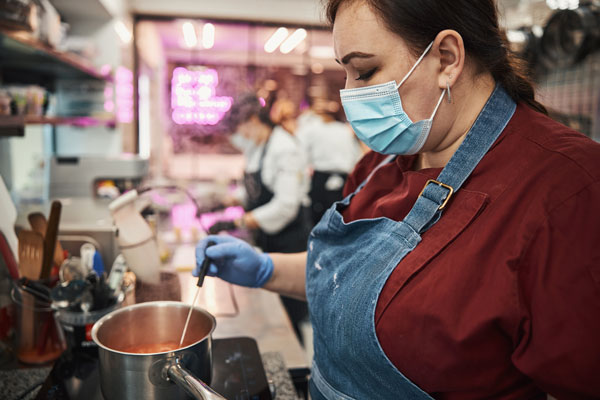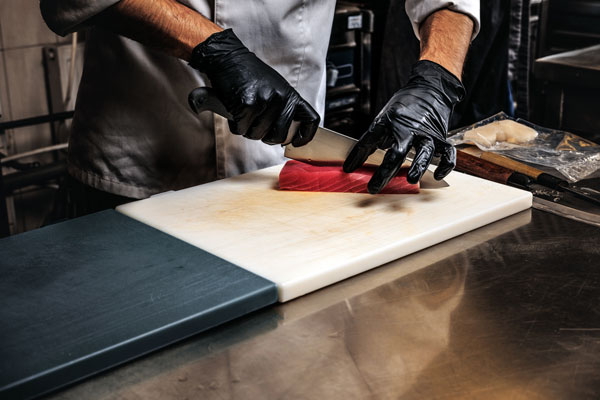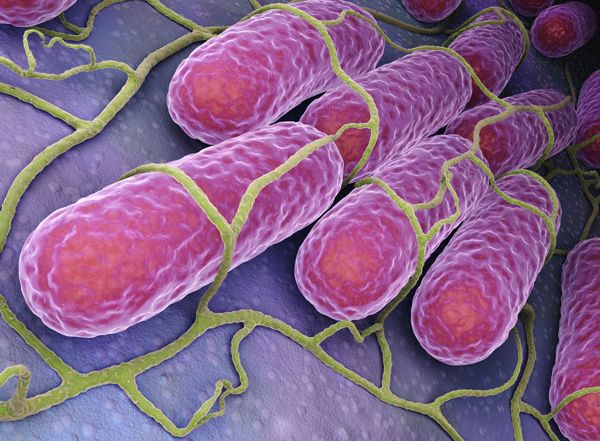Proper Cooking Temperature: A Basic Food Safety Measure
Each summer, we see an increase in the incidence of foodborne illnesses. Perhaps this is because of the warmer temperatures making temperature control for Time/Temperature Control for Safety (TCS) food more difficult or perhaps it is the increased amount of people who are barbequing this time of year – it is National Picnic Month, after all!
Earlier this month, I briefly discussed the impact climate change can have on our food safety system across the globe. As part of this discussion, I noted the increase we were likely to see in the prevalence of existing and potentially new bacteria, viruses, and parasites. One of the keys to controlling the spread of these in our food system is ensuring proper cooking and that food reaches the proper endpoint cooking temperature. And this is certainly more important during the summer when we do see an increase in picnics, and for foodservice operators, catering and barbequing in places our employees may not be accustomed to working.
There are two important aspects that our employees need to recall – the actual endpoint cooking temperature of various products and how to properly take the temperatures of food – especially if these are foods the employees are not accustomed to preparing from your normal menu.
During these times, it is important to remind our employees that even if we are not working in our standard commercial kitchen, food safety and endpoint cooking temperatures still apply. Along with this, there are two important aspects that our employees need to recall – the actual endpoint cooking temperature of various products and how to properly take the temperatures of food – especially if these are foods the employees are not accustomed to preparing from your normal menu.
Cooking temperatures are one of the basic food safety lessons that everyone learns in their first food safety class, but they are not always easy to remember, especially when newly discovered knowledge occasionally dictates that endpoint cooking temperatures be revised, which you will see if you follow food code updates.
Current recommendations for cooking temperatures are the following:
- 135°F: Plant foods cooked for hot holding;
- 145°F: Eggs prepared for immediate service, fresh meat steaks, chops and roasts;
- 155°F: Eggs prepared for later service, ground beef and pork; and
- 165°F: All poultry and stuffed meats.
Taking the temperature of food products can also be confusing to employees who may be working with a new food item or are not accustomed to using a food thermometer. The first concept employees should recognize is that each type of thermometer has a slightly different method to use. The two most common food thermometers used are the bimetallic stemmed dial thermometer and a digital thermometer. Be sure to review with employees the type of thermometer you utilize in your business and the depth at which the thermometer must be inserted into the food product to achieve an accurate reading.
Placement of the thermometer when obtaining the reading is also important to getting an accurate reading. Be sure to place it in the thickest part of the food and away from gristle, fat, and bone. In burgers, steaks, and chicken breasts, slide the thermometer into the side. When in doubt, get multiple readings of the product. I have taken the temperature of chicken in different parts of the product that varied in temperature by as much as 15°F.
When cooking large amounts of product, such as you might do with a large catering, it is best to measure the endpoint cooking of each item. But, realizing this is not always possible or feasible, be sure to measure multiple products to ensure the proper endpoint temperature has been reached. If you are putting large amounts of products on the grill or griddle at the same time, measure those which were placed on the cooktop at different times (first, middle, last) before removing the batch. Based on the thermometer you are using, be sure to give the thermometer time to respond to get an accurate reading.
For more resources for temperature control, be sure to check out our daily temperature log and temperature chart resources available free of charge on our FoodHandler resource page. Likewise, if you have any questions or comments, be sure to send me an email, we are here to help you serve the safest food possible to your customers! Risk Nothing.
READ MORE POSTS
Food Traceability in Foodservice Operations: An Essential, and Soon-to-be Required, Component of your Food Safety Plan
In June, I discussed the importance of having a solid food defense plan, and I provided you some resources for developing or strengthening your food defense plan. As I was writing those blogs, my mind kept turning toward food traceability. While they are distinctly different concepts, food traceability goes hand-in-hand with a food defense program. I would argue for your food defense plan to be effective, you must have an effective internal food traceability program, where you can trace the product back to the supplier (backward traceability), but also be able to trace the product from the supplier to the guest who was served the product (forward traceability).
Food Defense Plan Resources – at just the right price…
Earlier in the month, I discussed the importance of having a solid food defense plan in place for your foodservice operation. Even if the first version of your plan is not perfect, it is a start. Having plans down on paper will force you to think through the process and ensure the vulnerable points where opportunities exist for possible contamination within the operation are mitigated.
Don’t Turn a Blind Eye to Your Food Defense Practices
Late last week, as I mindlessly scrolled through Twitter, I ran across a Tweet suggesting the #IceCreamChallenge from summer 2019 was the real cause of the Coronavirus spread. Of course, the Tweet was made tongue in cheek, but it did cause me to reflect on that challenge, which had a short life on social media in the summer of 2019.
Salmonella and Listeria monocytogenes: Serious Threats to the Safety of Food
Earlier in the month, I mentioned the top microbial enemies we all face in foodservice operations, E. coli, Campylobacter, Salmonella, and Listeria monocytogenes. While we discussed E. coli and Campylobacter, we did not get around to discussing Salmonella or Listeria monocytogenes.










